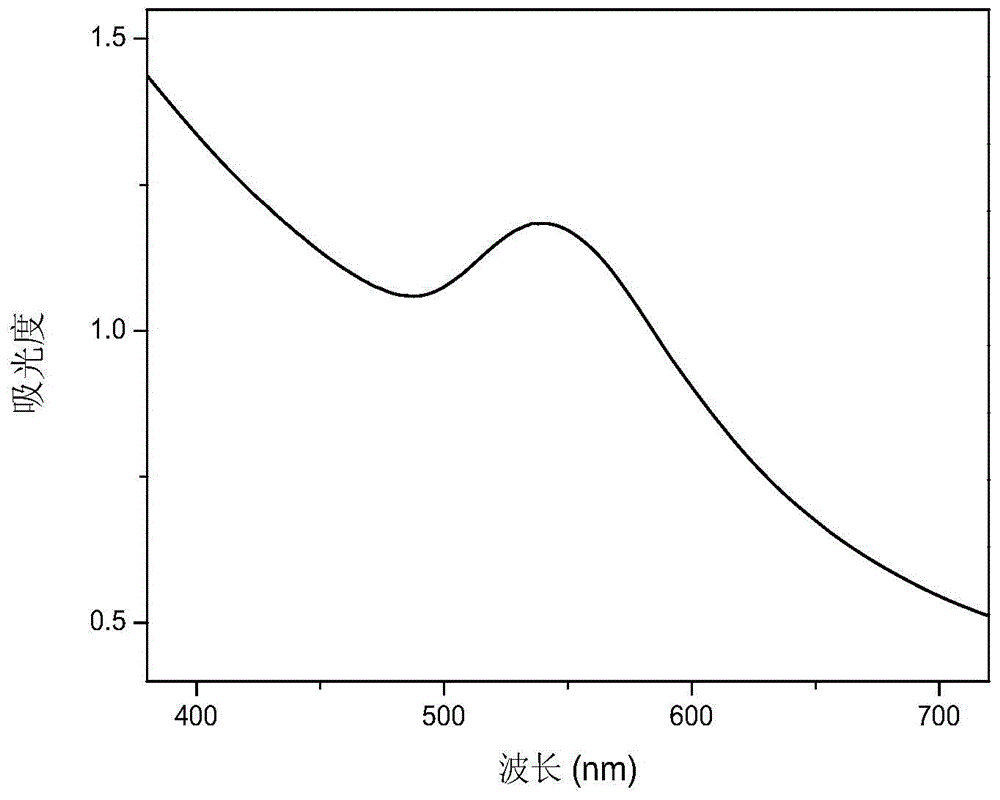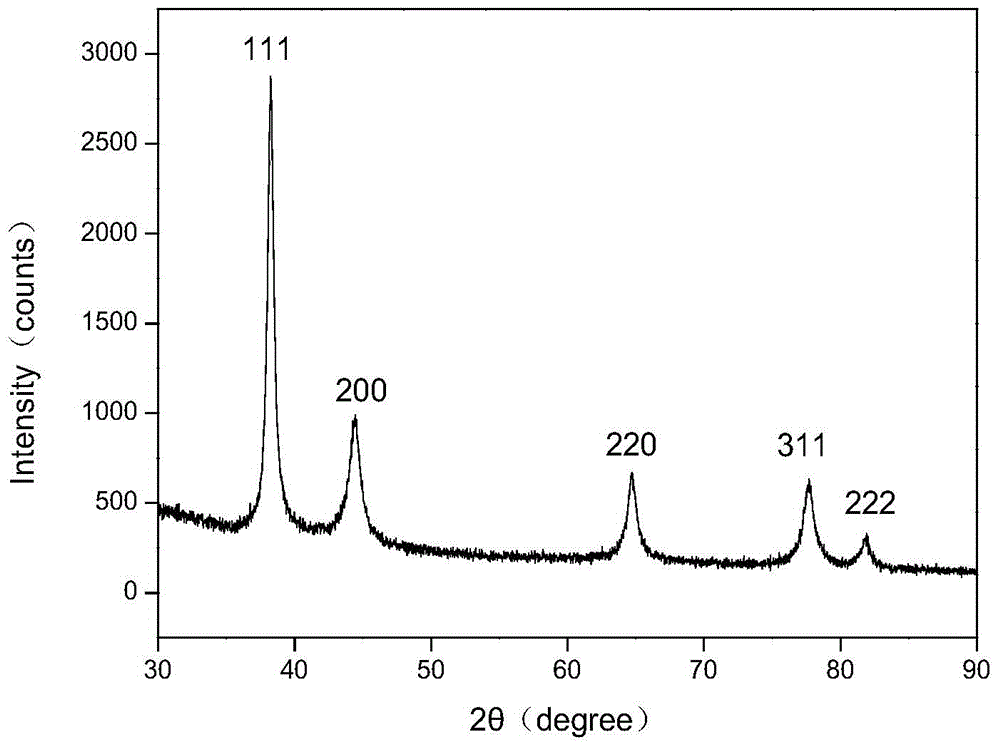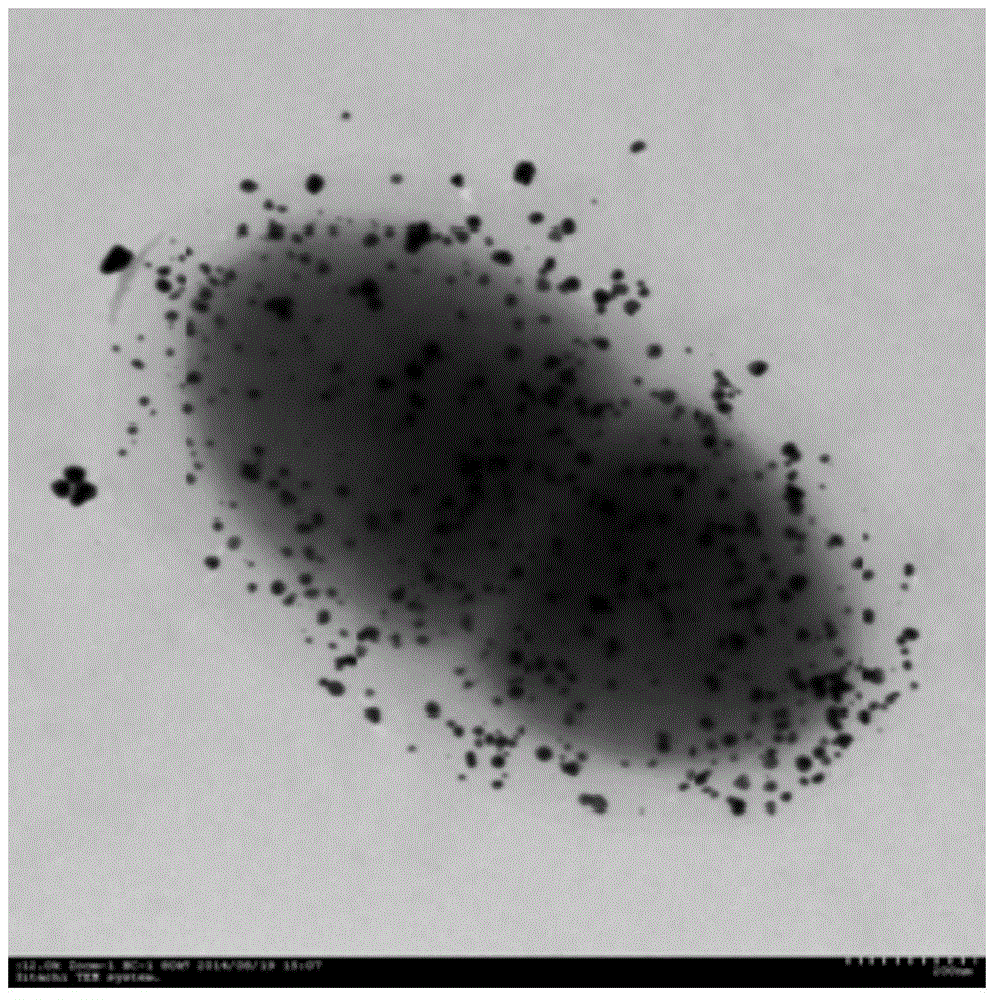Method for synthesizing shewanella halitios into god nanoparticles and application of gold nanoparticles
A bauhevara, gold nanotechnology, applied in the field of microbial green synthesis of nano-gold catalysts, can solve problems such as limiting the application of anaerobic bacteria
- Summary
- Abstract
- Description
- Claims
- Application Information
AI Technical Summary
Problems solved by technology
Method used
Image
Examples
Embodiment 1
[0030] Shewanella halitios Z4 cultured to the logarithmic growth phase was collected by centrifugation, washed three times with deionized water to remove possible residual culture medium, and then a bacterial suspension was prepared for use. Take 35mL of bacterial suspension and add it to a 100mL Erlenmeyer flask, add 5mL of HAuCl 4 solution and 5 mL of sodium lactate solution. Add 10 mL of water to make the reaction system 50 mL. The final bacterial concentration was 5.25g / L, the gold ion concentration was 0.5mM, and the sodium lactate concentration was 40mM. The Erlenmeyer flask was placed in a shaker (30° C., 165 rpm) and vibrated for 72 hours to obtain a gold nanometer solution. The color of the solution gradually changed from light yellow to purple. The formation of nano-gold solution was verified by UV-vis spectroscopy, XRD and transmission electron microscopy. The characterization results are as follows Figure 1-3 shown. The gold nanoparticles solution was centri...
Embodiment 2
[0032] The difference between this embodiment and embodiment 1 is that the bacterial concentration is reduced to 0.75g / L. The result of the reaction is severe aggregation, uneven shape and size, and larger particle size distribution than that of Example 1. The transmission electron microscope characterization results are as follows: Figure 4 shown.
Embodiment 3
[0034] The difference between this example and Example 1 is that the concentration of sodium lactate is 60 mM. The reaction yielded spherical gold nanoparticles with a particle size similar to that of Example 1. The transmission electron microscope characterization results are as follows: Figure 5 shown.
PUM
 Login to View More
Login to View More Abstract
Description
Claims
Application Information
 Login to View More
Login to View More - R&D
- Intellectual Property
- Life Sciences
- Materials
- Tech Scout
- Unparalleled Data Quality
- Higher Quality Content
- 60% Fewer Hallucinations
Browse by: Latest US Patents, China's latest patents, Technical Efficacy Thesaurus, Application Domain, Technology Topic, Popular Technical Reports.
© 2025 PatSnap. All rights reserved.Legal|Privacy policy|Modern Slavery Act Transparency Statement|Sitemap|About US| Contact US: help@patsnap.com



